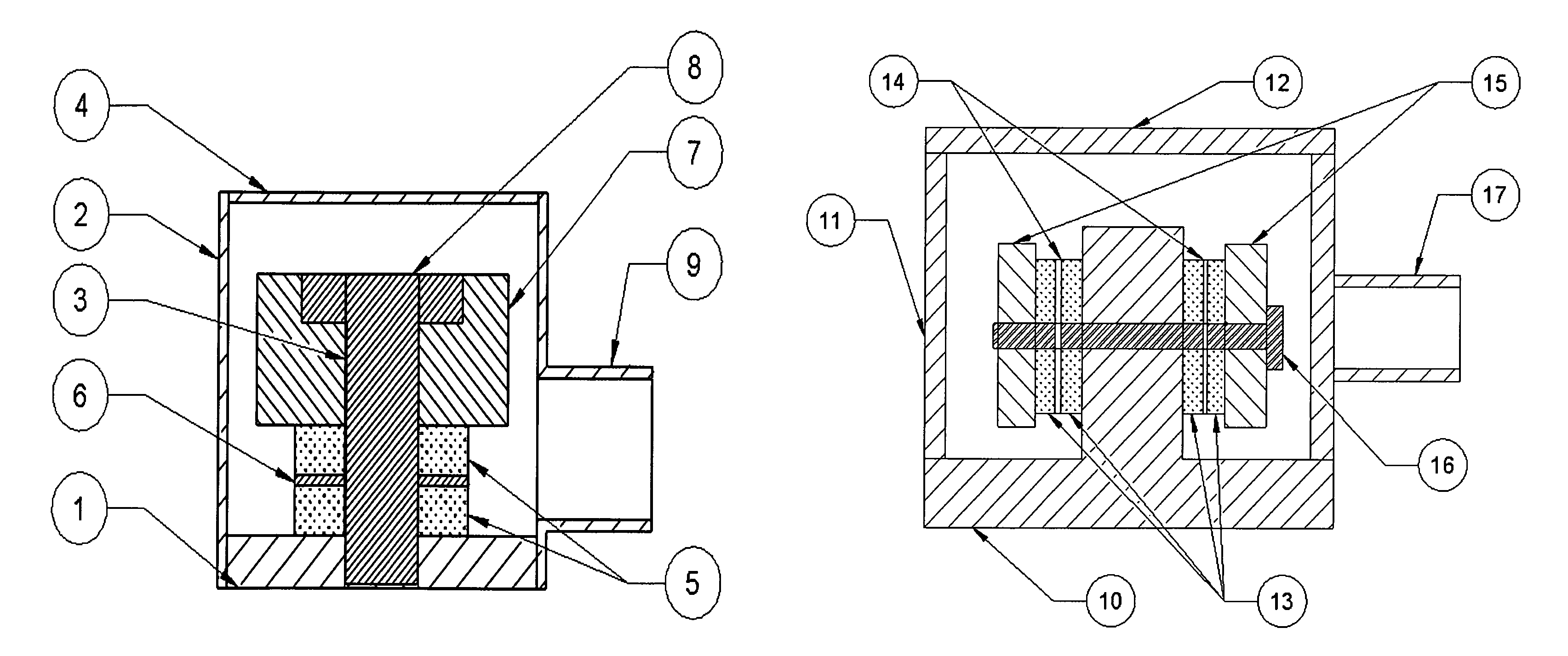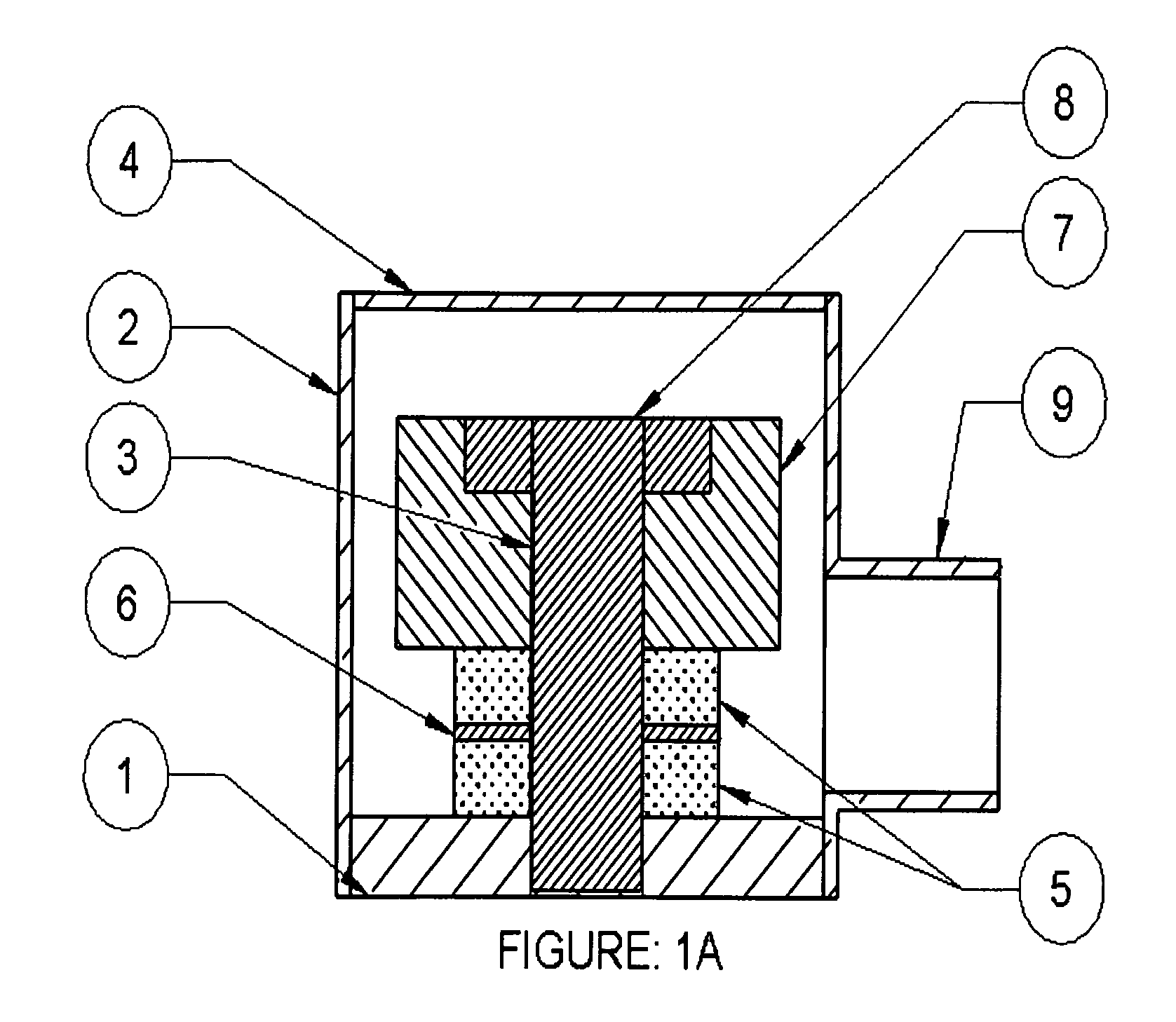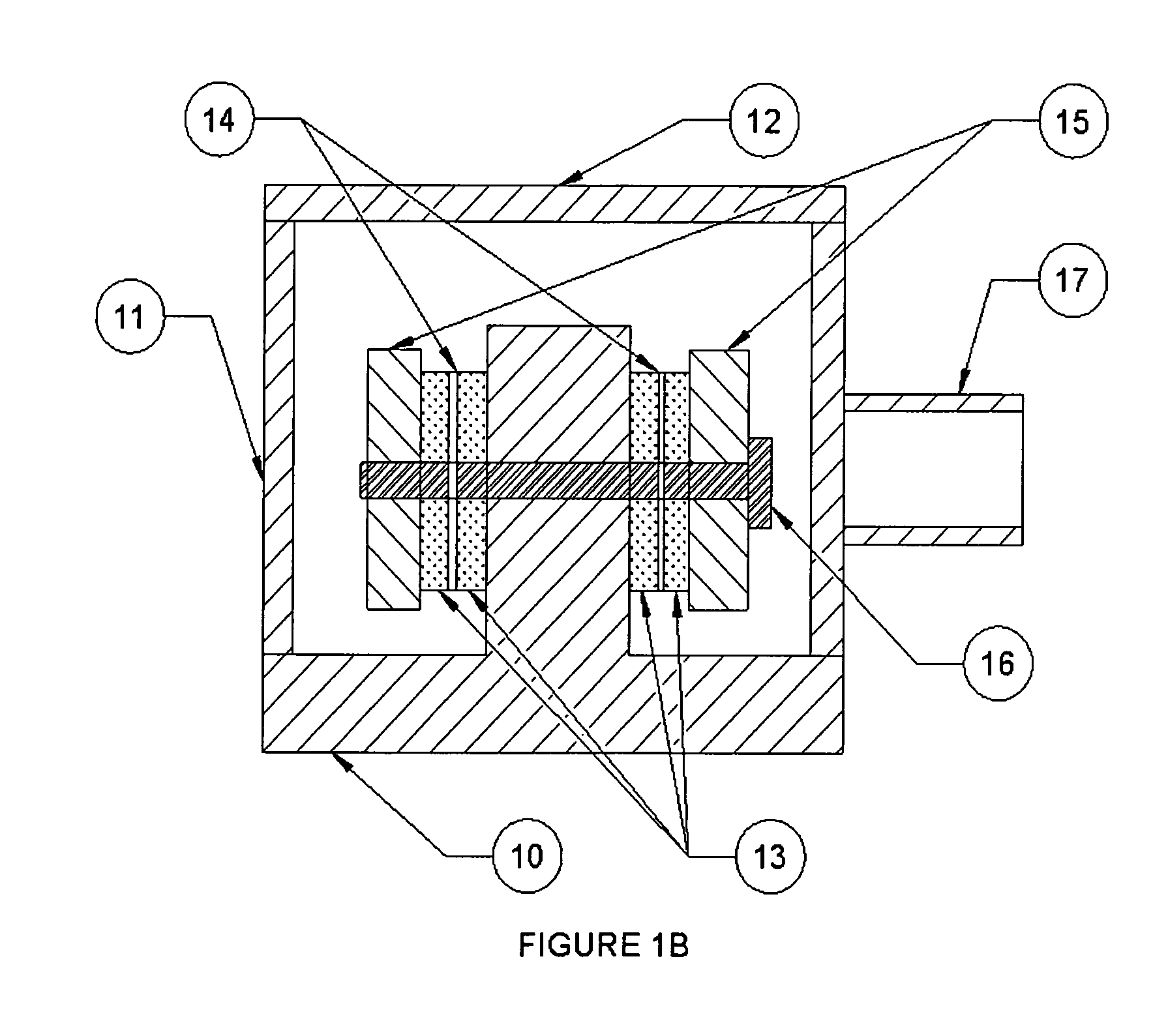Accelerometer for high temperature applications
a piezoelectric sensor and accelerometer technology, applied in the direction of acceleration measurement using interia forces, generators/motors, instruments, etc., can solve the problems of high impedance units, limited maximum temperature of operation, electronic parts inside the units, etc., to improve the performance of the sensor, reduce the effect of aging of electrical properties and long service li
- Summary
- Abstract
- Description
- Claims
- Application Information
AI Technical Summary
Benefits of technology
Problems solved by technology
Method used
Image
Examples
Embodiment Construction
[0047]The present invention utilizes a Silver metal window to compensate, and regulate the Oxygen equilibrium in hermetically sealed sensors. Said sensor in one of the preferred embodiments will measure acceleration, and includes a piezoelectric element which is susceptible to Oxygen partial pressure changes inside the sealed unit. All basic components of said sensor are pre-oxidized at a temperature higher than the intended operational temperature of the sensor. Further pre-conditioning can include Oxygen enrichment by exposing the sealed sensor to an enriched Oxygen environment, prior to operation on the field, at the factory. This is to reach the equilibrium faster in the case of Oxygen depletion of the piezoelectric elements. The Silver window given sufficient time will reach equilibrium of Oxygen depletion, as with the external atmosphere. However, if the external atmosphere is of different characteristics, or, of composed by reducing gases, the pre-conditioning of the internal...
PUM
| Property | Measurement | Unit |
|---|---|---|
| temperature | aaaaa | aaaaa |
| temperature | aaaaa | aaaaa |
| temperatures | aaaaa | aaaaa |
Abstract
Description
Claims
Application Information
 Login to View More
Login to View More - R&D
- Intellectual Property
- Life Sciences
- Materials
- Tech Scout
- Unparalleled Data Quality
- Higher Quality Content
- 60% Fewer Hallucinations
Browse by: Latest US Patents, China's latest patents, Technical Efficacy Thesaurus, Application Domain, Technology Topic, Popular Technical Reports.
© 2025 PatSnap. All rights reserved.Legal|Privacy policy|Modern Slavery Act Transparency Statement|Sitemap|About US| Contact US: help@patsnap.com



